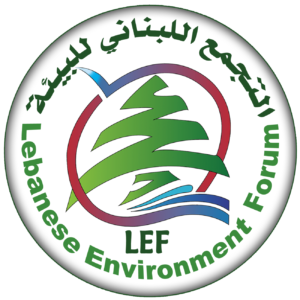In a major step toward safeguarding its coastal and marine heritage, Lebanon has launched a comprehensive evidence-based initiative to establish an effective Marine Protected Areas (MPAs) Network, integrating science, community input, and international standards. The initiative is spearheaded by the Marine and Coastal Resources Program (MCR) at the University of Balamand’s Institute of the Environment, in partnership with the Lebanese Environment Forum (LEF) and with the support of the European Union.
This effort is part of a national campaign to protect marine biodiversity, restore critical habitats, and strengthen Lebanon’s contribution to global environmental goals, including SDG 14 and the 30×30 biodiversity target.
🧭 A Strategic Foundation: From Desktop Study to Field Assessment
The first phase of the project involved a comprehensive desktop study, mapping 20 coastal and marine sites with ecological, social, and economic value. The study identified priority areas for protection, reviewed legal and governance gaps, and proposed a national MPA planning framework based on three scenarios. The most ambitious scenario aligns with global conservation targets and envisions a connected network of MPAs across Lebanon’s 225-km coastline.
Concurrently, a series of field assessments were conducted in proposed and existing MPAs—including the Palm Islands, Tyre Coast, and multiple estuaries such as Litani, Awali, and Damour. These evaluations revealed both the ecological richness and the severe degradation many sites face due to pollution, unregulated development, damming, and habitat fragmentation.
🔍 Focus on Estuaries: Vital Yet Overlooked Ecosystems
For the first time in Lebanon’s conservation history, the project assessed five estuarine sites—natural zones where rivers meet the sea—as critical components of the MPA network. Despite their biological significance and cultural importance, none of these estuaries currently enjoy formal protection. The reports urge urgent legal designation and coordinated watershed-to-sea management.
📡 Monitoring What Matters: A System to Track Impact
Recognizing that declaration alone is not enough, the University of Balamand developed a national monitoring framework for the MPA network. This includes protocols for environmental, socio-economic, and governance monitoring; field tools and indicators; and a phased roadmap for implementation. A centralized MPA Monitoring Platform is also proposed to ensure transparency, data sharing, and adaptive management.
🧩 Key Recommendations
The project offers an actionable roadmap that includes:
-
Officially designating proposed sites, including estuaries, as protected areas.
-
Updating Lebanon’s national MPA strategy in line with global frameworks.
-
Establishing a National MPA Coordination Committee.
-
Engaging communities and municipalities in co-management.
-
Creating a unified monitoring system to guide long-term decision-making.
🌊 A Message of Hope for Lebanon’s Marine Future
“This initiative marks a turning point for Lebanon’s relationship with its sea,” said representatives from the University of Balamand and LEF. “By linking science with community stewardship and aligning with global goals, Lebanon has the tools to turn its vulnerable coast into a resilient marine sanctuary.”
With the necessary political will and multi-sector coordination, Lebanon can transform its fragmented efforts into a national marine conservation success story—where biodiversity thrives, coastal communities benefit, and the sea is protected for generations to come.
The full reports are available at:
https://www.lbeforum.org/wp-content/uploads/2025/06/Assessment-of-MPAs-in-Lebanon-MCR-IOE-UOB.pdf
https://www.lbeforum.org/wp-content/uploads/2025/06/Estuaries-MCR-IOE-UOB.pdf


